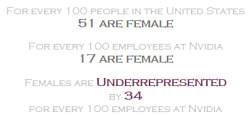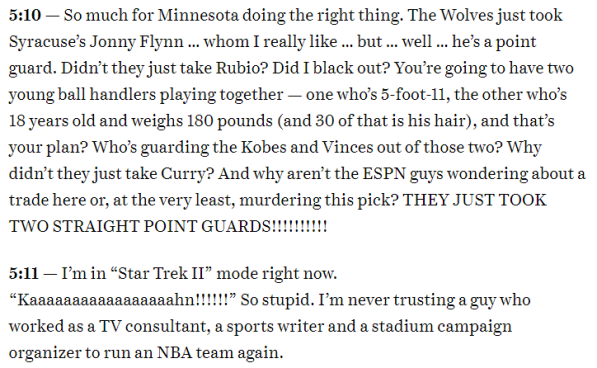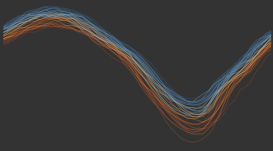A Need for Structure –> #PlanToGrow
In October of 2017, I wrote up some Data and Analytics related goals that I wanted to obtain by the end of the 2018 calendar year. My list contained six goals, all of which I felt were obtainable, but would take some dedication and hard work, in order to achieve. At the end of 2018, I sat down to review this list and realized for the first time, that while the fifth item on my list was checked complete, it hadn’t really been FULLY completed. The item read as follows; ‘Improve and Learn Every Week.’ While, I felt 2018 had seen me take some big steps forward in my journey, I didn’t feel I had improved and learned EVERY week throughout the year. So, in 2019 I wanted to do better. Realizing there is a ton of room for me to grow in this space and endless resources available, I decided that tracking my growth would not only accelerate my learning while holding me accountable, but it would also allow me to eventually share the idea with others!! And so, #PlanToGrow was born. I started by compiling lists of blogs, vlogs, videos, podcasts, books, community projects, anything and everything I wanted to learn around the topic of Data and Analytics, in 2019. So, with good enough lists to get me through at least the first few months of the year, I felt ready to get started. Each week throughout 2019, I would Tweet out what I planned to learn for that week. Then, after checking an item off the list, I would track it in a Google Sheets document. This was because I eventually wanted to visualize the results in Tableau. But, thanks to Sarah Bartlett and #IronQuest, I was able to make the visual part of the project a reality much sooner than it otherwise would have happened. #IronQuest’s February theme was “business dashboards,” so I thought what better time than now to put my data into a visual form, start tracking my progress in Tableau and share the templates with the community?
Learning and Tracking
To be honest, I put no thought whatsoever into where I would track my data, but instead went right to Google Sheets, where I felt comfortable and knew it could easily be shared once that time came. So, my tracker began and has evolved slightly over the past month or so. It may not be elegant, but it works; Here’s how. As mentioned earlier, at the beginning of each week, typically on Sunday night or Monday morning, I’ll Tweet out my plan for the week. That Tweet will look something like…

…then, throughout the week, as items are completed, they are tracked in the Google Sheets document. I shared the project at the February Twin Cities Tableau User Group meeting and was asked how I stay disciplined in my tracking. The answer is that Google Sheets is almost always open on my computer, so on good days, as soon as I finish reading a blog post or watching a video, I’ll turn right to Google Sheets and enter in the data. Otherwise, the app is on my phone, so that has helped tremendously, as well. With blogs/vlogs being the easiest resources to consume, after a couple weeks, I found that rather than bounce around, it was a good idea to focus on learning from just one individual each week. Therefore, in a worst case scenario, if I dropped the ball on tracking for that week, a quick pull-up of that person’s blog would allow me to scroll through the content and know whether or not I had read/watched each item. And with so many amazing people in our community having more than enough content on their blogs for me to get through in a week, this just seemed to make sense.
Sharing With Others
For me, the most exciting part of this project is the opportunity to share the idea and materials, with others. Having been engaged in the Tableau community for just over 18 months now, I know firsthand just how overwhelming it can be. There is SO MUCH amazing information out there, but sometimes it can be difficult to even know where to begin. In 2018, there were many occasions in which my free/learning time was unproductive, because too much of it was wasted with trying to figure out which blog post to read, which video to watch or what viz to download and reverse-engineer. Thanks to #PlanToGrow, my learning experience in 2019 has been much more relaxing and enjoyable. It really is amazing what a difference being prepared can make.
From beginning to end, the #PlanToGrow project has helped me in several ways. First and foremost, planning ahead helps me stay focused and on track each week…no more time wasted! Staying disciplined in tracking has helped that part of the project to not fall completely off the rails. Without the consistent tracking, there is no final piece of the project, the visual component in Tableau. The visuals allow me to quickly and easily see how I’m tracking to my overall goals and what each week looks like. Additionally, I can see how my community participation has been and which days of the week I need to be more productive. Shocker…I’m least productive on the weekends! All that is great, but my favorite part of the Tableau viz is the combination of the Set Actions and URL Actions that allow for lightning quick access to every piece of material I’ve covered in 2019. So many times in the past, I would read a great blog post or watch a useful video and then several weeks later, come across a situation where that very blog post or video would come in handy. But, in some cases I would be left asking myself…”what was that video called?” or “who wrote that blog post, again?” or “I swear I saw that on Twitter, right?” only to either fail in finding it again or waste too much time in the process of finding it. There will be no more of that…every great learning resource will now be a section of the treemap. Easily accessible from either directly within the treemap or by first selecting a category from the bar chart, to narrow down the options within the treemap. I love this!!
If you would like to create your own #PlanToGrow Tracker, all you need to do is follow a few simple steps. First, you will need to download a copy of the 2019 #PlanToGrow Tracker Template from my Google Drive and that can be found here. This document includes a Data tab as well as a Directions tab that explains the process of making this your own. Secondly, you will need to download the Tableau workbook and replace my data with yours. The workbook can be found here. That’s it!! If you’d like, feel free to share your workbook on Twitter and tag me (@JtothaVizzo) so I can see it.
Have fun and enjoy!































 Just over three weeks ago, I posted a viz about Notre Dame football, supporting it with a blog post called ‘Viz What You Love,’ professing and detailing my love for the Fighting Irish football program. A few days after that post, I shared a viz outlining the history of the CMA (Country Music Association) Awards Album of the Year winners. Having grown up in the middle of nowhere,
Just over three weeks ago, I posted a viz about Notre Dame football, supporting it with a blog post called ‘Viz What You Love,’ professing and detailing my love for the Fighting Irish football program. A few days after that post, I shared a viz outlining the history of the CMA (Country Music Association) Awards Album of the Year winners. Having grown up in the middle of nowhere,